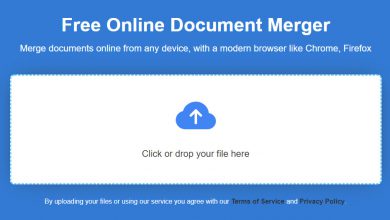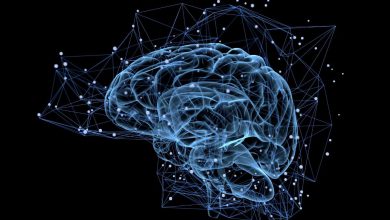
Custom orthodontic software
Healthy teeth, correct bite, and timely medical intervention for the implementation of individual treatment are fundamental factors affecting the quality of patients’ lives. More than 71% of patients have emphasized that full digitalization of the processes makes it easier and faster to make appointments, communicate with the doctor and receive the remainder. At the same time, almost 82% of health providers already use the benefits of dental software as the primary way to increase their efficiency. The high level of efficiency in dentistry is of vital importance by allowing individuals to:
- Diagnose problems and start orthodontics treatment early in childhood.
- Implement a set of preventive measures to avoid irreversible consequences.
- Choose the most comfortable mode for treatment to avoid stress in patients.
The absence of productive and innovative approaches to the treatment of dental problems can lead to the appearance of issues with other body systems. All patients should have an opportunity to receive quality medical care avoiding problems with making an appointment with a doctor for diagnosis and further treatment. Effective working algorithms can contribute to the most optimal solution to these problems by meeting the needs of the patients in different life situations. Quick response to the issue and openness in communication with patients are the key qualities of dentists caring about their efficiency level.
How to implement digital orthodontic software for your dental practice?
Digital technologies have firmly entered all spheres of human life, including medicine. The possibilities of their use in dentistry at all stages of patient treatment involve the following:
- Maintaining medical records. Many patients require a prompt response to their requests and needs. The introduction of innovative digital technologies for dental clinics in making appointments for clients provides an opportunity to create productive work schedules for doctors to achieve a balanced workload. Interactive patient charts describing their history, course of treatment, and recovery dynamics reflect valuable information for the productive work of doctors. Such systems are of great importance for any dental clinic.
- Diagnostics. Computed tomography, virtual articulators, and digital photographic equipment are the most common examples of technologies for digital dental practice representing an integral part of the functioning of any dental clinic. They allow the doctors to collect the best quality data for the formation of anamnesis. The absence of these digital technologies makes the process of qualitative diagnosis impossible.
- Modeling and simulation of clinical situations. Methods for obtaining and orienting three-dimensional computer models of teeth and dental rows, measuring the height of fissures, tubercles, the shape of their slopes, and approaches for controlling also require an introduction of technologies to take the indicators of the dental modeling software as a basis of the treatment scenario.
- Treatment. One of the symbols of the innovative development of dentistry in recent years implies the technology of computer-aided design and manufacture of prostheses, called CAD/CAM. This type of digital dental practice made a revolution in this field of medicine.
Orthodontic 3D software: the new way of treatment planning
Dentists have traditionally used alginate materials to create replicas of fractured or missing teeth. The procedure can be tedious, time-consuming, and agony for most patients since they need to press tightly on the material to obtain accurate impressions. If the impressions are not right, the process has to be repeated. However, you can digitally scan the patient’s teeth with an intraoral scanner. The scanner spotlights the area, while sensors take photos to produce a 3D digital model. Since they are faster, intraoral scanners save time and money when capturing impressions as they reduce chair time. Following are the reasons why intraoral scans are superior to physical impressions:
- Improved Accuracy: intraoral scans provide highly accurate digital images of the teeth and surrounding tissues, resulting in a more precise fit of the final restoration. Unlike traditional impressions, which can be distorted during the pouring process, digital scans are not subject to human error.
- Time Savings: intraoral scans can be completed more quickly than traditional impressions, saving patients and dentists time. There is no need to wait for the material to be set, and the process of capturing the images is more efficient.
- Increased Patient Comfort: many patients find the traditional impression process uncomfortable or unpleasant due to the materials used and the amount of time required to complete the impression. Intraoral scans are more comfortable, as they involve no physical contact with the patient’s mouth.
- Improved Communication: intraoral scans allow dentists to share detailed 3D images with dental laboratories, reducing the need for physical models to be shipped between locations. This can improve communication, reduce errors, and speed up the fabrication process.
- Reduced Waste: traditional impressions require the use of materials such as silicone and polyether, which can generate waste and contribute to environmental concerns. In contrast, digital scans are more environmentally friendly, as they do not require these materials. Furthermore, the entire procedure is considerably simpler, faster, and more pleasant for the patients. The dentist may save time by not sending the physical imprint to a lab. Instead, they can store the files on a computer. That is why in recent years more than 53% of dentists have started using orthodontic 3D software.
Dental implants and prosthodontics software
Accuracy is a vital component of any implant placement as the doctor cannot initiate the procedure without understanding the jaw area with precise teeth positions, bone density, tissues, and sinus cavities. Here, a prosthodontics solution can gather the data and capture a clear picture of the patient’s jaw by scanning the area. This means that implants are inserted precisely in the preset location. This improves the procedure’s safety, predictability, speed, and comfort while also lowering the necessity for bone transplants. It also helps put implants in places impossible before, making them effective for patients with significant bone loss. In fact, some studies suggested that using an intraoral scanner can make a significant difference in the accuracy of the operation. After gathering all required data, the dental 3D scanning software creates an accurate 3D model of the jaw, allowing the doctors to identify the ideal position for implant insertion. The use of prosthodontics software can improve the quality of patient care by reducing the risk of error in the design and fabrication process and enabling prosthodontists to achieve more predictable and aesthetic outcomes. It can also streamline workflows, reduce treatment times, and enhance communication between prosthodontists and other members of the dental team.
Integrating a custom 3D dental scanner into the clinic’s CRM system
The process of 3D printing is quicker, cleaner, and easier than traditional methods. Also, it is essentially the only method for turning digital prints and IOS images into models. Rather than keeping physical models, clinics and labs can keep them as digital copies. They can easily reproduce the model with digital images whenever necessary. A CRM system can serve as the best place to seamlessly store all of these copies. Due to its vast range of benefits, about 91% of businesses with 10 or more employees use CRM solutions.
For better patient care, dentists can also mimic patient teeth using 3D printing and scanning technology. However, these things can only happen if the 3D scanner operates on detailed information about each patient’s teeth types, possible conditions, bone mass, and jaw structure.
A CRM system can serve as the best source for such information, tailoring the dental computer software to each patient’s needs and features.




